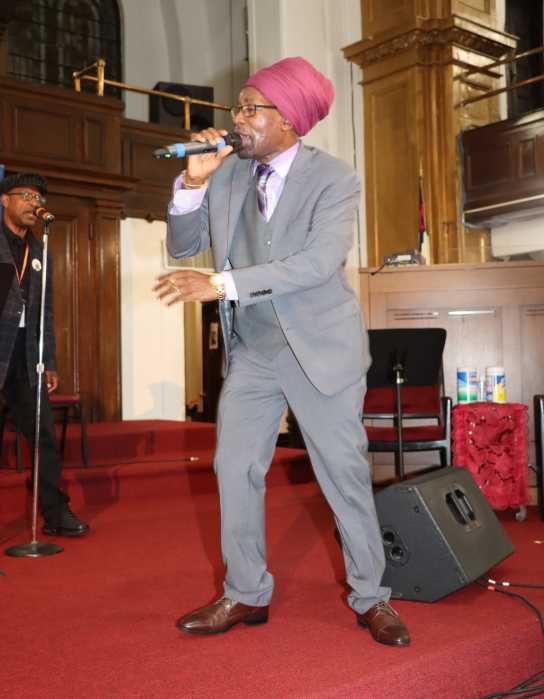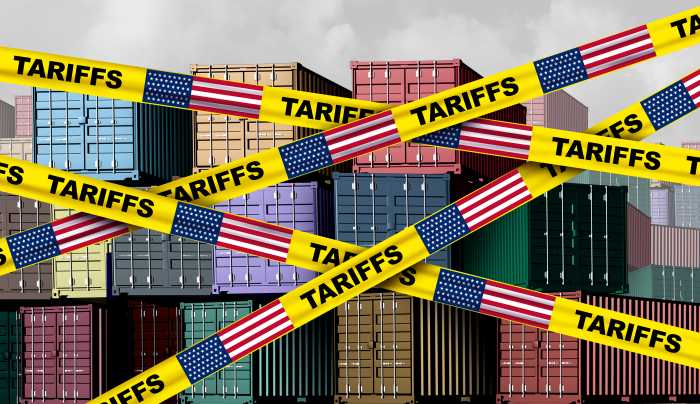“This was a very bad year” Josette Perard said, speaking to Caribbean Life in the Port au Prince office of the Lambi Fund. “The earthquake, hurricane, cholera and now the election”.
Nearly a year after the Jan. 12 earthquake devastated Haiti, Caribbean Life returned to the city and spoke with residents to see just how they fared over the past year and what they looked forward to in 2011.
First impressions were of a somewhat festive air created by colorful large posters displaying the faces of political candidates plastered to walls poles and abandoned vehicles and any flat surface large enough to hold one, a surreal juxtaposition with the pock-marked streets.
Downtown, the hard hit Jean Jacques Dessalines boulevard barely resembled its former self. Dust kicked up from the rubble of buildings swirled in the wake of vehicles, empty lots have replaced its collapsed buildings. A new steel market is being constructed and further down the original Cinq Coins restaurant has been replaced by an airy, new building on the opposite corner, but there is little sign of any other new construction. Merchants still line the sidewalks though, and there we spoke with several.
Alexandre Price, a furniture maker has sold his work here for the past 10 years. He lives near the airport with his wife and four kids and his furniture is made close by.
“After the earthquake things went really bad. Economy went down. People don’t have cash on hand, business cannot go well.” he explained. “There is no money, no materials to work to serve the clients. When economy is down things are slow, so there is no demand, there is no production. There is no job. People are on the street; they are not in a home.”
Asked what the mood of the country was, approaching the one year anniversary of the earthquake, he said: “I cannot guess what other Haitians are thinking; we are on the same boat and are waiting to see what will happen. The only thing, we will pray God to change things.”
Just across the street was Roselyn Jean-Robert as he repaired a zipper; his sewing machine set up on the sidewalk beneath a tin awning.
“I am a tailor I make cloth. I do everything; but the country’s economic situation put me on the street. I have been established here since 2006.”
Things have gotten worse in the past year but he is is reduced to repairing clothes rather than creating them, because he cant compete with the “pepe,” used clothes imported from America.
Asked how things could be better he said: “For things to get better we would need a change in our country but I don’t see where that change is coming, especially in politics. There is no hope. I don’t see where hope will come.”
Next to him sat Hilaire Pierre-Guerlor, 40, who sells sunglasses and repairs watches.
On Jan. 12 he had just packed up his things for the day when the earthquake hit.
“It surprised me in Rue Pavee,” he said. “My house was destroyed. I was lucky I was not inside. My life has been upside down since.”
Asked about the future, he said: “I hope for a change. For people to find jobs. If someone … people want to go to school and get a technical skills you can get it.”
Ms. Perard shared her her unique perspective on the situation, giving us a sense of the ebb and flow and what direction the country needs to go in the future. Her organization is small, agile and knowledgeable about the needs of both the rural and urban population.
They had an established network in place that connected donors to peasant organizations in rural communities. They were able, she said, to respond quickly to the needs of some 22 communities in four rural departments of Haiti from their earthquake damaged office in Port au Prince.
After the earthquake, an estimated 500,000 fled Port au Prince and returned to their home regions. Lambi’s first intervention was to distribute money to families who took in five or more refugees from the Port au Prince area in four rural departments through their network and had monitors in place to oversee the local efforts. Their second priority was food security, to provide the seeds and other needs to plant crops in the overburdened rural areas.
Because two of their staff members were agronomists, they had the foresight to choose crops that would be harvested in three to four months, so their harvest occurred before Hurricane Tomas passed through, flooding out the south and northwest of Haiti and wiping out many of the season’s produce.
“In Port au Prince, three months after the earthquake, we were approached by two women’s organizations: Coordination of Women Victims of Violence and Mature and Brave Women, who we had worked with before. We were able to help 450 women living in the camps. Money was provided to them for food and school costs. Most have now left the camps,” Ms. Perard says.
“Now we are working to educate rural communities on how to prevent cholera spreading.
“The refugees we helped did not stay, they came back to Port au Prince and Leogane. There is nothing, how can you ask someone to live there”? she asks “When he comes here its not because he likes it, to live in shanty towns like cite Soleil, he is forced to come to survive.”
“After Duvalier we had so much hope, after twenty years nothing has changed. Now an irresponsible state is using the facility of the election to gain their own power, it is a fiasco. We have to change the structure, decentralization. They have forgotten about the people in the rural communities, everybody has to be a part of the change, you can not develop a country like that,” Ms. Perard says.
“In our programs it is the people’s success. They are the ones who are making the change in the community they live in. If someone can live in the rural community, have a good school to send his children to, a health facility, and can find work to do, why would he come to Port au Prince?”

























